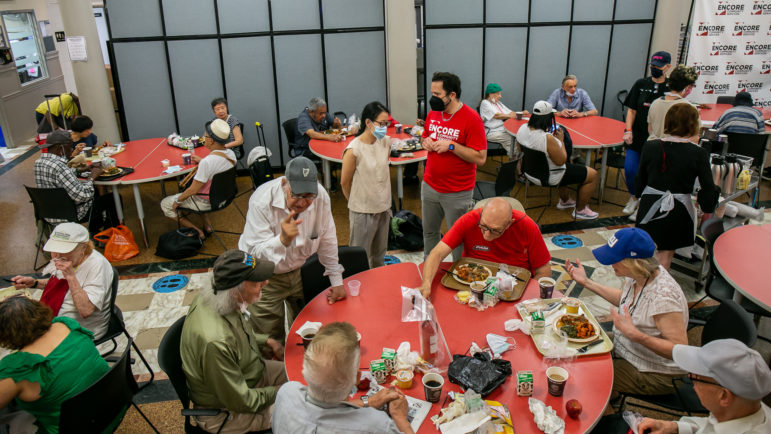Downsizing Prisons: How to Reduce Crime
and End Mass Incarceration
By Michael Jacobson
New York University Press, 292 Pages, $29.95
Over the past 30 years, America has undergone an expansion of its prison, parole and probation populations unprecedented in scale and impact. Today, more than two million Americans live behind bars, and many millions more are on parole or probation. That much is well-known.
Less well-known is that New York City, a showpiece for crime decline in the 1990s and 2000s, actually channeled fewer people into the prison system during the past decade, at a time when the rest of the country was busily putting more and more behind bars.
True, misdemeanor arrests have skyrocketed. The number of people cycling through New York City jails has risen. But as brutal as the policing strategies of Zero Tolerance New York have been, the total number of inmates in the city on any given day has gone down, and the total number of prisoners being shipped from the city to the state prison system has also declined. While states such as California and Texas have seen astronomical increases in their prisoner numbers in the past decade, New York State’s have increased only marginally–largely as a result of fewer city residents entering the criminal justice system.
In Downsizing Prisons, Michael Jacobson points to New York as a prime example of why states can’t simply incarcerate their way out of crime epidemics. There is, he writes, “no apparent relationship…between increased use of prisons and crime reductions.”
Jacobson is particularly well credentialed to make these arguments. Currently president of the Vera Institute of Justice and professor of criminology at John Jay College, he has behind him a long public service career–as a deputy budget director for New York City and as commissioner of the city’s Probation and Correction agencies. He’s got an insider’s understanding of which policies are good-sense social interventions and which are likely to be counter-productive, tools for demagogues and headline hunters that look “tough on crime” on paper but in practice cost a fortune and have very little impact.
Five years ago, the journalist Joel Dyer published The Perpetual Prisoner Machine. Dyer argued that a series of interlocking policies, budget choices, influences of tough-on-crime advocacy groups, and media representations of crime and punishment had come together to create an almost irresistible momentum toward expansion of the U.S. correctional apparatus. Whether crime went up or down, Dyer argued, enough people, businesses and government entities now had a vested interest in seeing the prison population rise that it would be extremely difficult to create effective counterweights.
In Downsizing Prisons, Jacobson theorizes just such a countervailing force, building on ideas developed in recent years by, among others, researchers at the Urban Institute and Joan Petersilia, a criminologist at the University of California, Irvine. In a world of overstretched state budgets, cutting dollars out of the correctional system is, Jacobson argues, both logical and politically possible. Reducing mandatory minimum sentences for low-level drug offenders; trimming the amount of time parole violators spend back in prison; revamping parole to help ex-prisoners reenter society rather than focusing resources on catching them in minor rule violations. If the public can be convinced that such measures won’t lead to significantly rising crime rates, Jacobson believes, they will likely tolerate a shrinking of state correctional budgets.
Because New York City saw such spectacular successes in battling crime without doubling or tripling its felon population, Jacobson suggests that it should serve as a poster child to reassure nervous public officials nationwide about the viability–and marketability to their constituents–of such an approach. He proposes diverting prison funding to rebuilding damaged, high-crime neighborhoods in order to create environments less likely to generate such large numbers of addicts and criminals in the first place.
These shifts, he suggests, would in the long term lead to public attitude changes deep-rooted enough to allow more politicians to challenge existing correctional policies, without fear of being seen as soft on crime. And that evolving political terrain would, in turn, lead to further legislative changes that would channel more people away from the correctional system and into drug treatment, community service and other programs. He posits a series of feedback loops between budget offices, legislatures, public opinion and correctional agencies that, he hopes, will cumulatively create what might be termed “a perpetual prisoner reduction machine.”
Jacobson’s writing is not stellar. He is a technocrat who loves detail and numbers. At times, Downsizing Prisons tries to cover too much ground too quickly and risks becoming a statistics-laden primer. Yet this is an important book. In particular, the recommendations for reforming parole systems will likely become an influential part of the policy debate in many states. And Jacobson’s insights on New York should give pause to advocates of 1990s-style tough-on-crime policies that expand prisons.
Thirty years ago, theorists such as James Q. Wilson used crime data and public dissatisfaction with the criminal justice system to dramatically realign America’s crime-and-punishment debate. Over the past few years, budget crises, as well as public rebellions against policies emanating from the war on drugs–expressed through various state ballot initiatives–have created the conditions for another tectonic shift. Downsizing Prisons should help direct that movement.
Sasha Abramsky is the author of Hard Time Blues (St. Martins Press).








